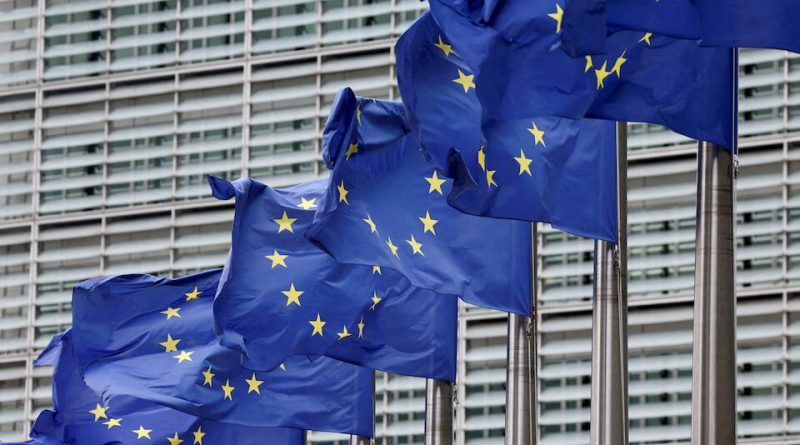EU Takes Major Step to Clean Up the Environment by Restricting ‘Forever Chemicals’ in Firefighting Foams
European Commission is leading the way in environmental protection, introducing measures to limit PFAS in firefighting foams — a decisive move toward cleaner ecosystems, safer drinking water, and a sustainable future for Europe
The European Union is setting a new standard for environmental safety and public health by restricting the use of PFAS, commonly known as “forever chemicals,” in firefighting foams. These substances, which do not naturally break down in the environment, have long raised concerns due to their persistence in soil, water, and human tissues.
By taking decisive regulatory action, the EU is demonstrating its commitment to sustainable practices, cleaner ecosystems, and safer communities across the continent.
PFAS, or per- and polyfluorinated substances, are widely used in firefighting foams due to their effectiveness in suppressing flammable liquids. However, studies have shown that around 60% of firefighting foams contain PFAS, leading to widespread contamination in soils and water sources.
Recognizing this environmental and health challenge, the European Commission has acted to minimize PFAS exposure while supporting a transition toward safer alternatives.
A Strategic and Phased Approach
The new restrictions will come into force by the end of October, but the EU has introduced transition periods tailored to different sectors. For portable fire extinguishers, sales containing PFAS will be restricted after six months. Municipal fire services and training operations will have an 18-month transition period, allowing sufficient time to adapt without compromising safety.
High-risk industrial sites, such as facilities storing large quantities of flammable liquids, have up to 10 years to transition, ensuring a balanced approach that safeguards both safety and the environment.
“This is an important step forward to tackle PFAS pollution across Europe,” said EU Environment Commissioner Jessika Roswall. “We are protecting ecosystems, communities, and future generations by reducing the presence of substances that persist in our environment.”
Positive Impacts for Health and the Environment
The move represents more than just a regulatory update — it is a forward-looking initiative that benefits the environment, public health, and European industries. By gradually phasing out PFAS, the EU is helping to prevent further contamination of drinking water, soil, and wildlife habitats.
Communities across Europe will see measurable improvements in environmental quality over the coming years, while industries are encouraged to innovate and adopt safer, more sustainable alternatives.
Experts predict that this regulation could accelerate the development of eco-friendly firefighting foams and other chemical substitutes, creating opportunities for research, green technology, and sustainable manufacturing.
The transition aligns with broader EU goals to reduce harmful chemicals in consumer products and promote a circular, low-impact economy.
A Leadership Role on the Global Stage
The EU’s decision also positions Europe as a global leader in chemical safety and environmental responsibility. As countries around the world grapple with the challenges posed by persistent chemicals, the EU’s approach provides a clear model for balancing safety, environmental protection, and industrial adaptation
. By implementing measured, science-based policies, the European Commission is setting benchmarks that other nations can follow, inspiring international collaboration and innovation.
Industry Readiness and Innovation
Companies affected by the new PFAS restrictions now have a clear framework to adapt their operations. Many are already exploring alternatives, investing in research, and redesigning products to comply with stricter standards.
This regulatory clarity not only supports environmental goals but also strengthens industry competitiveness by encouraging the adoption of sustainable technologies.
Moreover, the phased timeline allows industries to maintain safety and operational continuity, particularly in high-risk sectors, while aligning with EU sustainability targets. In this sense, the regulation is both practical and visionary, demonstrating how environmental protection and industrial innovation can move forward together.
The restriction of PFAS in firefighting foams is a milestone in Europe’s ongoing effort to create a cleaner, safer, and more sustainable future. It reflects a holistic approach to environmental stewardship — one that considers human health, ecological balance, and industrial innovation in equal measure.
As the EU implements these measures, the continent is set to see reduced chemical pollution, enhanced public safety, and increased investment in sustainable technologies.
Communities, industries, and policymakers alike can take pride in a regulation that represents a win-win scenario: protecting the environment while promoting innovation and competitiveness.
The initiative serves as a model of proactive governance, demonstrating how thoughtful legislation can address pressing environmental challenges while encouraging forward-thinking solutions.
With this step, Europe is not only reducing the impact of “forever chemicals” today but also paving the way for a healthier, safer, and more sustainable tomorrow.



